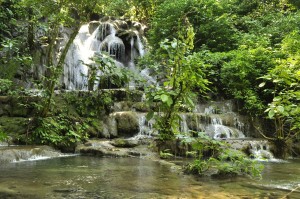Tena, Ecuador
Javier – Apprentice Shaman (Jungle Tour)
Our first attempt at meeting a shaman and partaking in an Ayahuasca ceremony wasn’t a particularly successful one. With some strong intel that Tena, a jungle frontier town some 5 or 6 hours from Quito in Ecuador, was a key hub for shaman we arrived to find the place completely shutdown for the weekend. The guides and shaman contacts we had contact details and introductions for turned out not to be answering phones or responding to emails and we were reduced to tackling things the old fashioned way. Hanging around for a few days and walking the town, we talked to a number of travel and tour companies, scraping together their recommendations on jungle / shaman adventures. Not an ideal way to do things but several seemed to have some options that they could put together – it was definitely low season. This was not the first, well-researched, beautiful introduction to the Ayahuasca medicine we were seeking, but we were here and working through the options decided on one anyway.
Steering clear of foreign options, a local company said they would take us on a 3 day tour into the jungle near their traditional village, as part of which we would take Ayahuasca with a local shaman from the village or that was what we gleamed through our limited, heavily dialected Spanish conversation. It sounded quite authentic and was locally run so appealed – anyway it was cheap, we were here, why not?
As you would expect though, the reality didn’t quite match the expectations of our fervid imaginings. The village turned out to be located only some 20 minutes outside Tena, where we were dropped off on the side of the road outside town, each given gumboots and introduced to our guide / cook / shaman, Javier. Young, maybe mid-20’s, Javier was a cool looking guy with tattoo’s and a long plait of hair down his back, but little command of English. Not quite what we had in mind when it comes to our image of a shaman, but it looked like we could connect with him pretty well and we were kind of past the point of turning back.
We then set of on an hour walk through the jungle wading over numerous small streams in our gumboots and eventually arriving at a funkily crafted cabin in a well maintained clearing. The plan was to take Ayahuasca that night, so given the need to fast for the day beforehand we had little energy and nothing much to do except relax and rest. Relaxing in hammocks for most of the morning, we then walked went on a brief walk for a few hours while Javier introduced us to various medicinal plants, clays and their traditional uses. We were pretty impressed with ourselves simply in being able to follow most of what he said in Spanish.
Upon return we set about preparing the Ayahuasca brew. Under instructions and occasional intervention from Javier we cut down 2 x 2 foot lengths of a 12 year old Ayahuasca vine growing near the hut and chopped these into 4 x 15cm lengths each. We then stripped the vine of its thin covering of outer bark – the white inner wood of the vine reacting with the air, quickly turned a reddish brown. Apparently this is the strongest concentration of Ayahuasca in the vine. These pieces we then crushed into smaller, thinner strips and loaded into a large pot, covering with water. Javier then added several handfuls of Charipunga leaves to the pot and set it to boil for 3 or 4 hours, reducing the liquid to a couple of bowlfuls.
Around 8pm, with the moon lightening up the jungle night sky, Javier did a simple ceremony, blew some smoke over the broth and served us up a bowlful each. The taste was very earthy and bitter, but not nearly as vile as I was expecting. While we waited for it to take effect, he explained that his father was a shaman and that he had been taking Ayahuasca for 7 years studying under the 2 shaman of his village. At one point drinking Ayahuasca 20 days straight. Young as he was, it was re-assuring, we had had our doubts about the whole experience up until this point. Javier then began to softly sing icaro’s (sacred songs), play a flute and shake a fan made of leaves used for purifying energy and we settled back and waited for things to take effect.
Megumi started throwing up right on schedule 30 minutes in, but I didn’t have the same compulsion. After 45 minutes I drank a little more – still no visions or nausea. After a little while though, I became dizzy, disorientated and unbalanced as though drunk. My thoughts quickened and started jumping around. I felt euphoric and perceived things in kind of an earie half-light, shadows and shapes appeared to move out of the corner of my eye. This continued for some 4 or 5 hours, it was all quite unusual, but not the visions and experience I was expecting. Javier later explained that it was not uncommon the first time, it took him several times before he experienced the visions.
Next day I tried eating and found myself throwing up as I should have the night before. Some delayed metabolistic reaction I guess, I was also still feeling a little weird and offbalance from the experience. But we headed off on a 6 hour jungle hike to a distant cave where we would spend the night By evening, following a big meal things were back to normal and we trekked back to the village and returned to Tena the next day.
In all it was a pleasant, if not really compelling experience. But the intimacy of cutting the vine and creating the brew ourselves, just us, the moon and the jungle for a first time seemed a beautiful orientation to the Ayahuasca experience. Even if the results had belied our expectations.
Tena, Ecuador
Shaman Don Luis / Kuyaloma
Returning to civilization we heard back from our original contacts, they had been caught up in a 10 day retreat during our previous visit, but had scheduled a ceremony for the following week that we could attend. It meant delaying our planned stay in Ecuador by another week, but it offered a more authentic experience and was too tempting to pass up, so we looped back around to Tena for another go. We have learnt many times on this trip that there is no point having regrets.
At a meeting point by the river in central Tena, we met a group of 6 other ceremony participants (1 German, an older American guy, an older Austrian / American couple plus 2 local Ecuadorians) along with Jan, the guide and organizer of the experience. Jan who goes by the name “Feather Crown” is a Czech national that had been living in Ecuador for the past few years. In that time he had worked and studied with many of the shaman in the Tena area and occasionally put together guided experiences with some of them, such as the one we had signed up for.
Kuyaloma is located about 20 minutes from Tena towards Michualli, the other side of Tena to our previous adventure. It is a small community, presided over by the shaman Don Luis and his apprentice son Juan Andi. Don Luis is VP of the regional shaman council and considered one of the most respected and powerful shaman in the area. Jan had explained that there are more than 200 hundred shaman in the area, most villages and extended families have one, but many are alcoholics. There are few foreign Ayahuasca tourists here unlike in Peru, a large part of the reason we have sought out an experience here, thinking it would be more authentic. Jan has developed a relationship with Don Luis, partly because of the quality of his ceremonies and skills, but also because he is alcohol free and that the proceeds from the foreigners he brings here, are tangibly plowed back into the infrastructure. Located behind a large tin covered basketball court, which acts as the community refuge centre, Don Lui’s property is located on a hill, with the river and township below. Despite the proximity it still feels peaceful and somewhat isolated, surrounded by plants and jungle. He has recently built a 2 story block for simple sleeping accommodations, 2 stand alone tambo’s (huts) and a large circular ceremony hut. Recently covered pipelines and open dirt gutters show where sewerage for bathrooms had only just been completed.
Guided and translated into English by Jan, the ceremony starts around 8pm with an introduction by Don Luis who we had not seen in daylight. In the twilight, backlit only by glowing coals of the ceremonial huts fireplace, Don Luis castes an impressive figure – shirtless, wearing a grass skirt and a crown of feathers. He talks of how he came to his profession. A shamanic tradition handed down to him from his grandfather and fathers before him. Initially he was trained through stories from the spiritworld, until a visit to a sacred waterfall nearby led to a sacred experience and revelation of the spirits.
The ceremony space was a big, round, thatch-roofed hut, with a recessed fireplace built into the floor, and several fireplaces arranged outside with bench seating amongst the tree’s. We were all seated around the edge of the hut, cushioned benchseats, with foam mattresses behind on the wall so that you could lean back at a 60 degree angle comfortably. The Ayahuasca had been brewed that day from a Negro (black) vine and combined with Challipunga leaves, similar sounding to the brew we had made ourselves previously. When Don Luis had finished speaking, he began the ceremony itself , blessing the Ayahuasca brew by blowing tobacco smoke through the liquid and chanting some sacred songs (or icaro’s). We then each went forward, sat on a small wooden stool before him and after another blessing, drank a small shotfull of the Ayahuasca. The experience of this itself, castes a large mystical shadow – the feathers, grass, tobacco smoke and bare chest of the shaman in the dim light was transformative in and of itself. The Ayahuasca tasted much stronger than our first experience, though we are drinking considerably smaller quantities. After drinking, we are given Awasca, a plant stimulant to rinse our mouth and help rid some of the after taste, as well as some ginger to chew, also helping with digestion and nausea.
After a few minutes, everyone was leaning back meditating, relaxing and waiting for the brew to take hold. Don Luis started playing a small twangy instrument, a harmonica and singing songs, walking around purifying the space and the energy. The presence and atmosphere this created was captivating and magical all in itself. Within 15 minutes, several people fell heavily under the Ayahuasca spell, groaning and writhing on the ground, throwing up and grappling with all sorts of demons it seemed. It was intense and immensely distracting. Jan and some of the other family acting as assistants helped take these people outside, fanning them with leaves and feathers trying to calm them and remove negative energies. After an hour or so, I felt a sudden shift in the space, the twilight changed to a half-light, taking on an almost mystical aspect with slight visual inconsistencies appearing out of the corners of the eye, tinged with occasional flashes of blue fire – very subtle nothing strong or intense.
After a while, with violent groans and purging still occurring outside I was called forward by the shaman for an energy cleansing. This is traditionally what shaman do for community members in Ecuador, whether or not you have even drunk Ayahuasca its really the key focus of the ceremony. Shirtless I sat before him on the small wooden stool while he set about balancing my energies. He started the cleansing by spit-spraying “agua de florida”, a perfumed alcohol over my body, front and back of my hands. He then placed his lips to the crown of my head and blew his energy into my being, sharing his knowledge and energetic strength, a process he later repeated at the end of the cleansing and by putting his lips to the palms of my hands. What followed next was a hypnotic, beautiful ceremony of sacred songs, instruments and ritualized fanning using dry leaves that were performed as an intense, energetic dance all over and around my body. The energy and intensity of the performance was both surreal and immense, it must have lasted a full half hour, during which I felt numbness and tingles over different parts of my body. When he finished I tried to stand and almost fell over, dizzy with the energetic transfer effect.
After relaxing for a few moments, I could stand and realized I felt totally euphoric, lighter and completely clear. Whatever had taken place during the cleansing had created a state of absolute clarity and bliss within me. I basked in it for a while and explored outside, even sensing the dark energies of the other participants still purging by the fire did not dampen my new found state. Not really feeling the effects of the Ayahuasca though I decided to take some more. Most people were outside now, groans, purging and bodies in different states littered the seats and fire areas. The shaman himself was by the fire, his wife and son hitting him with leaves, chanting songs and feeding him lemonwater. He was in very deep, as he later explained and they were trying to keep him in this world, to bring him back from the edge. Throat cleansing and purging echoed all around me in the night.
I still felt the twilight edge, but again the Ayahuasca seemed to have little effect – my new energy clarity seemed to have super-ceded the brews effects. I settled back around the fire as the evening started to calm down again, the shaman’s cleansing rituals, songs resuming as part of the others cleansing rituals, creating a harmonic and soothing background. About 4m we went to bed.
The next day we shared a fantastic, Ayahuasca diet friendly breakfast cooked by Jan’s Slovakian partner. Then we sat down and shared experiences, everyone had a completely different perspective and story to tell it seemed, although myself and Megumi seemed quite aligned. No-one could believe I had taken 3 doses of Ayahuasca. Several people had lost all control and gone as close to the edge as they believed possible on the first. One American had done more than 40 ceremonies in Peru and rated this amongst the strongest he had ever had. Others had encountered spirits or purged deep personal issues. It’s a little disconcerting, I feel fantastic and clear – quite amazing really the energy cleansing must have really removed some significant burdens from me, but it was still not the deep, visionary, spirit world experience I was expecting. There is a sensitivity or attunement required with this particularly brew we are told from Jan – be patient. Deciding to ride the momentum, we agree to return the following day and sit in ceremony again.
Ceremony 2
Wow – what a difference a day makes. One of those total, revelatory, life changing experiences that you want to scream from the highest mountain tops with joy and new awareness!
The ceremony was almost identical in format, there were 9 of us, 6 returning from the first night, but all of us had a completely different experience. Don Luis started with a story again, telling us of a time when he was very young and had taken a journey 17 dys down the river into the Amazon somewhere in Peru. He had been given Ayahuasca and encountered a giant Anaconda which he rode and was taken on a journey that featured several outer world encounters. It was beautiful and mesmerising, even if I couldn’t really conceive yet some of the spaces he was sharing.
After blessing the brew, we imbibed. This time after 15 minutes, reality shifted completely. It started with a cold shiver that crawled up my body closing in like a veil, every core of my being vibrating. In front of me the light shifted and slowly everything transformed into a moving mosaic of organic fractals, a pulsing and shifting display of chemical structures before me. I was frozen and unable to move as the world started to kaleidoscope – buzzing with the intensity of this wave of transition. After a while I started to feel a wave of nausea and managed to find my way outside. Everything pulsed and moved visually, but as I made my way to the tree’s, I found them glowing with a bright purple energy field. Each emitted a discernable energy life force that I could see, sense and feel, it was totally Avatar like for want of a better description – a connection of the purest quality. Purging heavily I sensed spirits moving around me, one rose out of the ground right in front of me and beckoned me on. Of the earth, a weirdly shapeless form, dark brown, its arms like mittens waving my purging on, encouraging me to purge whatever negative energy or blocks I was trying to remove from my body. All over, I had a sense of dejavu of familiarity with this realm or space. But the sudden awareness, speed and intensity of the experience I was processing also created a sense of panic. I felt myself freaking out at the waves and intensity of the revelations. I found myself trying to analyse what I was seeing, experiencing, wanting to describe it, to document it, think about what it mean’t and in doing so I felt the experience begin to recede a little. I spent a lot of time trying to divorce the rational side of my brain – to free myself, to let myself flow fully and go with this new realm and experience, but felt firmly held back. In hindsight now there is a lot more work I realize I needed to do here to empty my mind and open myself up further to this experience (similar I guess to some of the meditations I have studied). At the time though, this was a big barrier, I kept finding myself in the face of this realm and these possibilities, being pulled back by my own rationality. There was a driving need to get outside of myself and separate myself from the moment to process it and in so doing compromising the experience.
Calmer as a result, but with everything still pulsing visually and trapped in this new spiritual realm, I was able to lie down and for a time flow with the visions and experience a little. After a while though, I felt a repeated compulsion to purge again and found myself in the jungle, leaning on my new tree spirit friend’s for support, as I dry purged, kind of vomiting air. Expunging something deep inside that I needed to be rid of, though I know not what specifically. This went on for some time, periodically Jan or one the family’s assistants would come over and fan me, cleansing me of the bad energy I was releasing and protecting me in the process. This tangibly felt better each time it was performed. I was still in a state of total wonder and amazement at what was happening, but slowly the purging and the fanning eased the intensity of what was happening. I was also consciously aware of the tree’s support and energy helping me as well, plus a mysterious dog that seemed to be always by my side. I found out later he was called mascot and only ever really appeared during ceremonies.
I then found myself back in the ceremonial hut and seated before the shaman for an energy cleanse. I was shaking and still nauseas, Don Luis on entering could barely walk himself, lost deep in his own communion with the spirits, he had to be helped to his place. Bowed before him, he fed me his energy through the crown of my head and my palms, sprayed me with the ‘agua de florida’ and began his cleansing ritual of songs, dances and fanning with full power and energy. I closed my eyes and was lost to this dark, shadowy, tobacco filled realm. Soothing, familiar and somehow peaceful I felt the shakes and convulsions and battles within slowly subside, dissipate and slip away altogether replaced with a calmness, strength and clarity. When I finished I sat back in the ceremony room and relaxed. The visuals and other worldly perception was slowly receding and I felt myself slipping back into a serene and peaceful clarity.
It had all happened so fast and so intensely it actually felt kind of frustrating. I had been shown the door and pushed in, I had perceived this otherworld, interacted with its messengers and affirmed the experience that I had been seeking. But I had also found myself not quite ready or unable to let myself go and release myself to go deeper. There is still much for me to resolve, remove here. It is inspirational and world view changing for me in so many ways, but at the same time incredibly humbling. I am just a baby at the gates of perception, dwarfed by the immensity of the things I do not know or understand it seems. I am committed to going a lot deeper though and here I have received the encouragement I needed, but also a sense of the reality and challenges s well. There is so much I do not know or comprehend, so much that I need to let go of and re-evaluate.
The next morning I felt a little dizzy, but clear, light, pure and simply euphoric at the new awareness, excited at the paths ahead. We share experiences again, everyone is different, experiences all commensurate with each persons various stage, experience or needs. Megumi’s has been largely similar to mine it appears – it has been truly groundbreaking for her as well. Jan shares what he perceived with many of us on the energy plane and we are all incredibly bonded by the experience.
Jan also explains that while we have been cleansed and intensely energized by the Shaman and our experiences, we are also totally opened up and therefore vulnerable to other energies and bad spirits, to people taking energy and losing momentum. There are therefore some rules to follow from here. No alcohol for 6 days, no pork for 4 days, no sex for a week. No shaking hands with people for a while (the palms are a key energy transfer point, where energy flows and is refilled). Basically eating lots of fruits, vegetables which we do anyway and avoiding crowds, busy city environments until our new energy bodies can settle. It’s a lot to absorb, but we are floating on a high. We would love to go deeper and stay for more, our new German friend signs on for a month with Don Luis, but we intend to go deeper and explore this more in Peru. While we will remain seared by the experience forever, it was time to move on.
You can read more about our Peruvian experiences here
and the some of the background on the why of it here
![Jungle Medicine 1 – Ecuador Tena, Ecuador Javier – Apprentice Shaman (Jungle Tour) Our first attempt at meeting a shaman and partaking in an Ayahuasca ceremony wasn’t a particularly successful […]](http://meltingplots.com/wp-content/uploads/2011/02/Chillipunga.jpg)








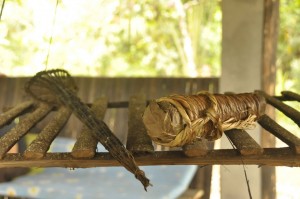



![Chasing the Vine Vomiting, diarrhoea, nightmarish visions, serpents & spirits, fasting, restrictive diets, celibacy, mosquito’s and other bizarre insects…. strange things indeed to associate with a totally voluntary […]](http://meltingplots.com/wp-content/uploads/2011/01/Aya3.jpg)

![Postcards from Galapagos There are some places that from the moment they are mentioned regale the senses with a certain mystique, appeal and promise – the Galapagos Archipelago […]](http://meltingplots.com/wp-content/uploads/2011/01/galapagos7.jpg)









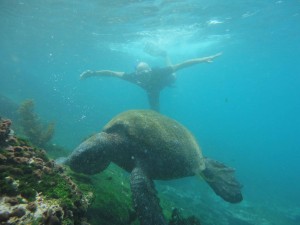

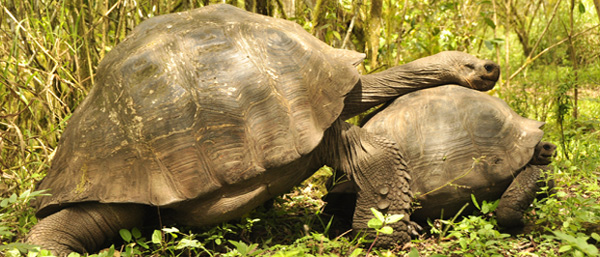
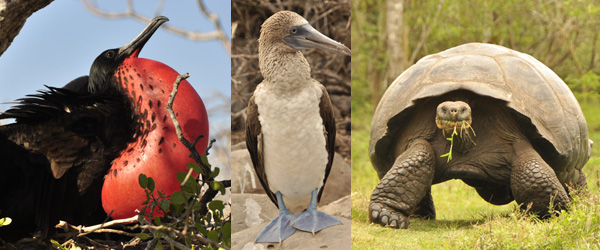

![Of Mayan Imaginings The Mayans are one of those great mystic ancient civilizations, like the Egyptians and the Khmers of Angkor Wat, they suffered a demise so sudden […]](http://meltingplots.com/wp-content/uploads/2010/12/Top1.jpg)






